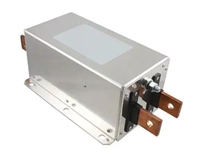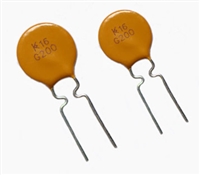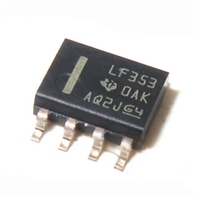24LC41A
3.5
Acknowledge
3.0
BIDIRECTIONAL BUS
CHARACTERISTICS
Each receiving device, when addressed, is obliged to
generate an acknowledge after the reception of each
byte. The master device must generate an extra clock
pulse which is associated with this Acknowledge bit.
Characteristics for the Bidirectional bus are identical for
both the DDC Monitor Port (in Bidirectional mode) and
the Microcontroller Access Port The following bus pro-
tocol has been defined:
Note:
The microcontroller access port and the
DDC Monitor Port (in Bidirectional mode)
will not generate any Acknowledge bits if
an internal programming cycle is in
progress.
• Data transfer may be initiated only when the bus
is not busy.
• During data transfer, the data line must remain
stable whenever the clock line is high. Changes in
the data line while the clock line is high will be
interpreted as a Start or Stop condition.
The device that acknowledges has to pull down the
DSDA or MSDA line during the Acknowledge clock
pulse in such a way that the DSDA or MSDA line is
stable low during the high period of the acknowledge
related clock pulse. Of course, setup and hold times
must be taken into account. A master must signal an
end of data to the slave by not generating an Acknowl-
edge bit on the last byte that has been clocked out of
the slave. In this case, the slave must leave the data
line high to enable the master to generate the Stop
condition.
Accordingly, the following bus conditions have been
defined (Figure 3-1).
3.1
Bus not Busy (A)
Both data and clock lines remain high.
3.2
Start Data Transfer (B)
A high-to-low transition of the DSDA or MSDA line
while the clock (DSCL or MSCL) is high determines a
Start condition. All commands must be preceded by a
Start condition.
3.6
Device Addressing
A control byte is the first byte received following the
Start condition from the master device. The first part of
the control byte consists of a 4-bit control code. This
control code is set as 1010 for both read and write
operations and is the same for both the DDC Monitor
Port and Microcontroller Access Port. The next three
bits of the control byte are block select bits (B1, B2, and
B0). All three of these bits are zero for the DDC Monitor
Port. The B2 and B1 bits are don’t care bits for the
Microcontroller Access Port, and the B0 bit is used by
the Microcontroller Access Port to select which of the
two 256 word blocks of memory are to be accessed
(see Figure 3-4). The B0 bit is effectively the Most
Significant bit of the word address. The last bit of the
control byte defines the operation to be performed.
When set to one, a read operation is selected; when set
to zero, a write operation is selected. Following the Start
condition, the device monitors the DSDA or MSDA bus
checking the device type identifier being transmitted,
upon a 1010 code the slave device outputs an Acknowl-
edge signal on the SDA line. Depending on the state of
the R/W bit, the device will select a read or a write
operation. The DDC Monitor Port and Microcontroller
Access Port can be accessed simultaneously because
they are completely independent of one another.
3.3
Stop Data Transfer (C)
A low-to-high transition of the DSDA or MSDA line
while the clock (DSCL or MSCL) is high determines a
Stop condition. All operations must be ended with a
Stop condition.
3.4
Data Valid (D)
The state of the data line represents valid data when,
after a Start condition, the data line is stable for the
duration of the high period of the clock signal.
The data on the line must be changed during the low
period of the clock signal. There is one clock pulse per
bit of data.
Each data transfer is initiated with a Start condition and
terminated with a Stop condition. The number of the
data bytes transferred between the Start and Stop
conditions is determined by the master device and is
theoretically unlimited, although only the last eight will
be stored when doing a write operation. When an over-
write does occur, it will replace data in a first in first out
fashion.
Operation Control Code Block Select R/W
Read
Write
1010
1010
B2B1B0
B2B1B0
1
0
2003 Microchip Technology Inc.
DS21176D-page 7






 电子元器件中的网络滤波器、EMI滤波器与EMC滤波器:分类关系与功能详解
电子元器件中的网络滤波器、EMI滤波器与EMC滤波器:分类关系与功能详解

 NTC热敏电阻与PTC热敏电阻的应用原理及应用范围
NTC热敏电阻与PTC热敏电阻的应用原理及应用范围

 GTO与普通晶闸管相比为什么可以自关断?为什么普通晶闸管不能呢?从GTO原理、应用范围带你了解原因及推荐型号
GTO与普通晶闸管相比为什么可以自关断?为什么普通晶闸管不能呢?从GTO原理、应用范围带你了解原因及推荐型号

 LF353数据手册解读:特性、应用、封装、引脚说明、电气参数及替换型号推荐
LF353数据手册解读:特性、应用、封装、引脚说明、电气参数及替换型号推荐
